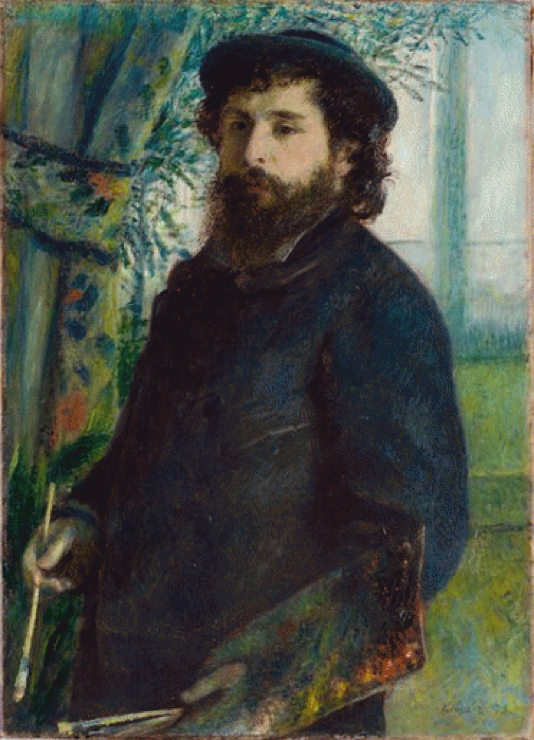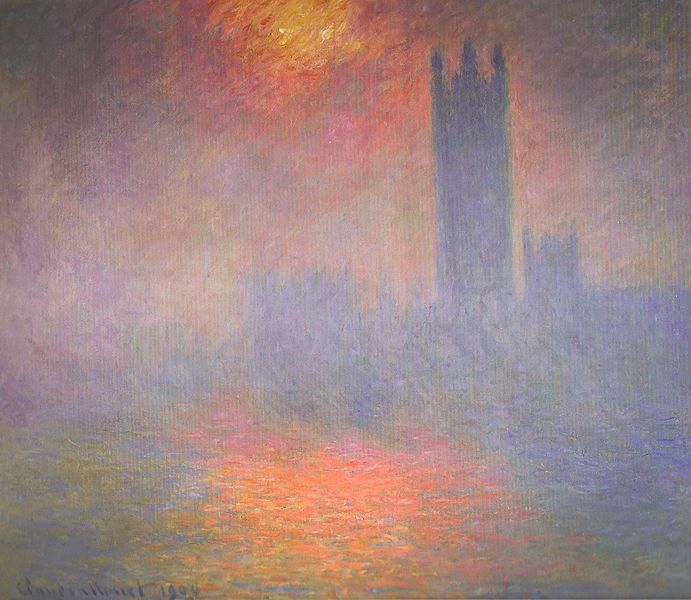Claude Monet
Claude Monet’s Woman with a Parasol is on display in Garden Street on the wall of Co-op funeral directors.

Claude Monet, although born in Paris, was brought up in Normandy, France, where his father ran a successful chandlers in La Havre. Monet’s father always wanted his son to work in the business as well, but his mother, who was a singer by profession, supported his aim to become an artist.
Monet became one of the main artists of the Impressionist movement who often worked outside on their canvases or boards, ‘en plein air’, depicting nature as they found it then and there.
In fact, the term Impressionism came from Monet’s painting Impression, Sunrise, which was exhibited in the first alternative exhibition to the Salon de Paris of 1874.
The artists in this movement revolutionised and scandalised French painting at the time. Traditionally, finished landscape paintings were done in studios; the brushstrokes much less free, and compositions balanced and highly structured. Even if painters, for example, the Barbizon School, who were painting outside in the Forest of Fountainbleau, considered these paintings to be studies for the final works that were executed in the studio.
Claude Monet was to become one of the leading lights of the Impressionist movement, along with his friends Auguste Renoir, Alfred Sisley and Frédéric Bazille, who also attended the classes of Charles Gleyre in Paris in the 1862.
Monet had already been painting along the Normandy coast with Eugine Boudin, and both were influenced by the Dutch landscapist, Johan Jongkind. It was his aunt along with Jongkind who may have arranged Monet’s release from a seven year period of military service in 1861. Monet’s mother had died when he was sixteen, and his father would not pay to prevent his military service in Algiers, unless he gave up his art career. However, once in Algiers, Monet contracted typhoid fever. He convalesced in Paris and did not return to military service. Nevertheless, Monet claims that the period in Algiers influenced the observation of light that was an enduring feature of his painting for the rest of his life.
Like Camille Pissarro and Charles-François Daubigny, Monet moved to London during the Franco-Prussian war (1870-1). Here we see another feature of Monet’s work, how he repeatedly revisits a subject matter, the Palace of Westminster to focus on the light at different times.

Musée d’Orsay

It was this obsession with light that was to dominate Monet’s work throughout his life. His last works focussed on the lily pond he built at his house in Giverny. Here he did around 250 paintings of his garden – not to study the flowers, but the colours of the flowers via the light that reacted with them.

After his return to France he lived at Argenteuil (1871-8). It was during this period that Monet painted Woman with a Parasol in 1875. The scene depicts Camille Monet, his wife as the wind blows her clothes and hair, with Jean Monet further away up the hill. The artist views them both from below – a snap shot of movement as the woman looks round and the boy looks up over the brow of the hill. Consider this a painting executed over time, but giving the impression of immediacy. This was exactly the spontaneity that Monet wanted to convey in his paintings. Notice also the shadow of the woman made up of a multitude of small brushstrokes of a variety of colours and like wise the white of the dress – neither are white nor black. The Impressionist movement was keen to represent natural colour as light reflected from surfaces.
Camille Monet died in 1892 – Claude painted his dead wife’s face, and said, obviously shocked,
I one day found myself looking at my beloved wife’s dead face and just systematically noting the colours according to an automatic reflex!
For more information on Claude Monet,
https://en.m.wikipedia.org/wiki/Claude_Monet
https://www.tripimprover.com/blog/woman-with-a-parasol-madame-monet-and-her-son-by-claude-monet
